Mingsheng ZHAN: Coherent Formation of a Single Ultrocold Molecule
Pei WANG 2020-11-05
On November 4, 2020, Prof. Mingsheng ZHAN, chair scientist at Innovation Academy for Precision Measurement Science and Technology, CAS was invited to the 39th Science Lecture in College of Science. He gave a talk on coherent formation of a single ultrocold molecule, which was chaired by academician Dapeng YU, head of Institute for Quantum Science and Engineering.
Guest Introduction
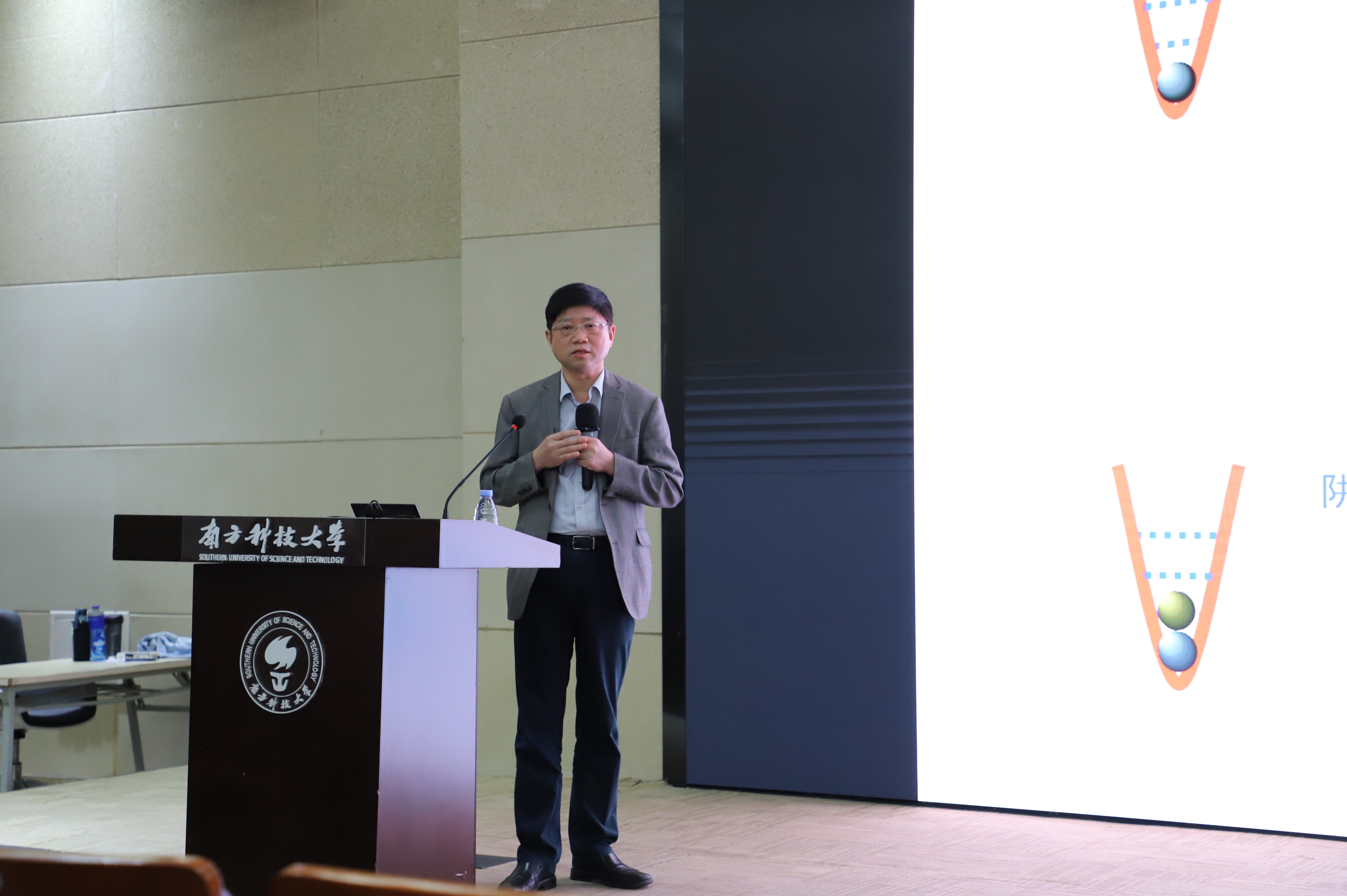
Prof. Mingsheng ZHAN
Mingsheng ZHAN received his doctorate in 1988. He was engaged in experimental research on laser cooling and trapping of Li atoms during his postdoctoral period in 1988-1991. In 1995, he was selected as the “100-Talent Program” of the Chinese Academy of Sciences(CAS), and has been a researcher of Wuhan Institute of Physics and Mathematics, CAS. He has worked in cold atomic physics, atom based quantum information and precision measurement. He realized confinement of single Rb atom and atom array, high fidelity quantum logic gate, controlled collision and quantum entanglement of two heteronuclear atoms, magic intensity optical dipole trap, and coherent formation of a single ultracold molecule. He also tested the weak equivalence principle with a ten-meter fountain cold atom interferometer, and developed various atom interference devices, such as atomic gravimeter, atomic gravity gradiometer and atom gyroscope.
Lecture Review
During the lecture, Prof. Mingsheng Zhan introduced the achievement his research group has made in the rubidium single-atom array system in recent years, such as the realization of the collision of two-atom ground states in the single-atom quantum state control, and the long-lived coherent storage and transfer realized in magic light intensity dipole trap. In the aspect of single-atom array and atomic quantum computing, it has realized the quantum entanglement of heteronuclear two atoms, high-fidelity single-qubit gate, and second-level balanced coherence time. Based on these preliminary works, Prof. Mingsheng Zhan further introduced the coherent synthesis of ultra-cold single molecules in the Rb-85 and Rb-87 systems.
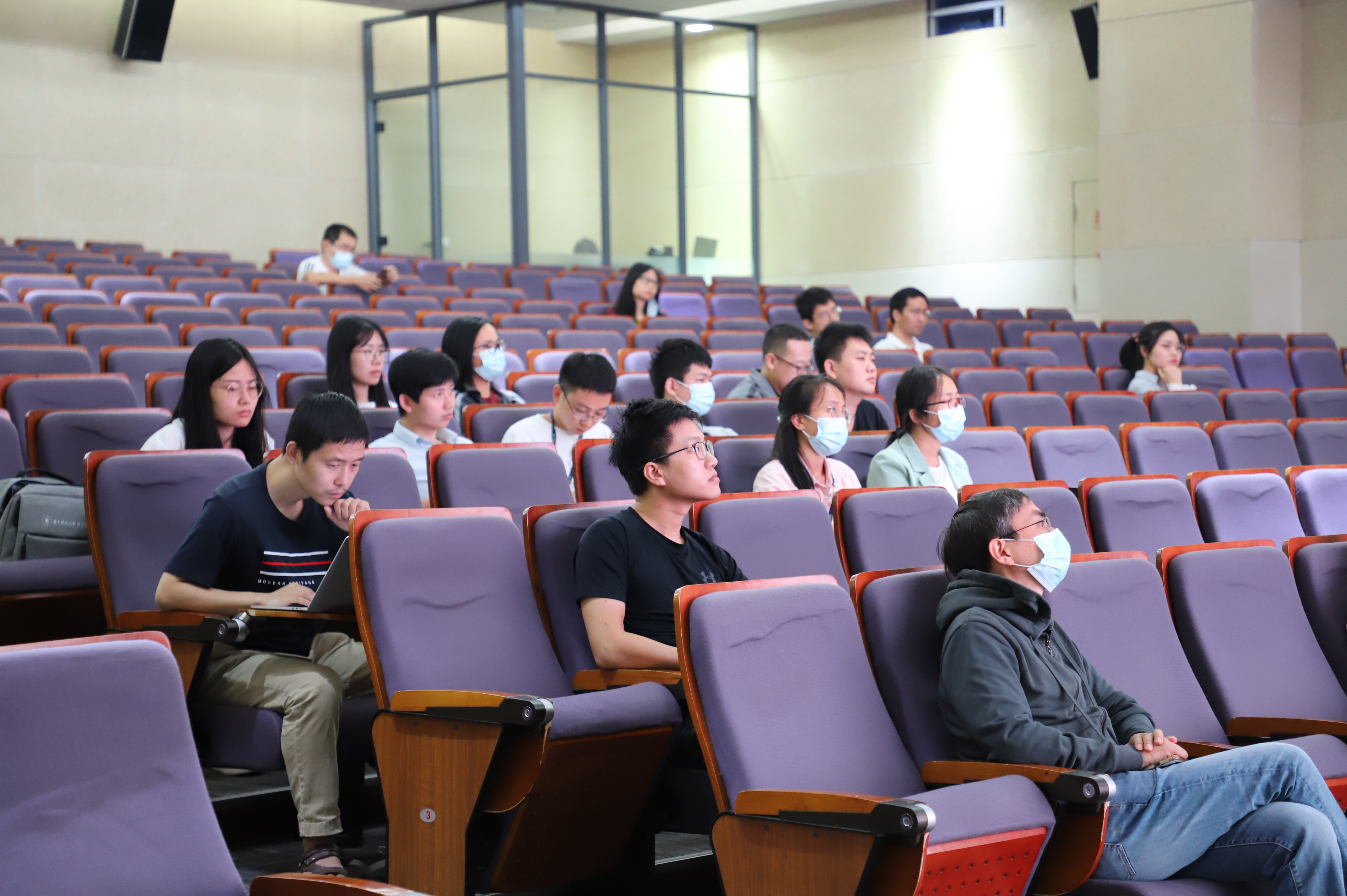
Students are listening to the lecture
With higher internal energy level than cold atoms, cold molecule has been regarded as an important quantum resource, which can be used in ultra-cold chemistry, quantum simulation of condensed matter systems, precision measurements for testing basic physics, quantum information processing and many other frontier scientific researches. In order to give full play to the advantages of ultra-cold molecular systems, people need to have the ability to fully manipulate single molecules, and one of the effective ways is to coherently synthesize single molecules from few-body atoms based on the fully manipulated single-atom system in the optical trap. Although a research group from Harvard University demonstrated the use of photo-association technology in an optical trap to synthesize a pair of heteronuclear atoms into a single diatomic molecule, the accompanying spontaneous radiation in this process will cause strong decoherence, making coherent synthesis of single molecules impossible.
To overcome the problem of decoherence in the process of synthesizing single molecules, Prof. Zhan’s team took a different approach and initiated a single-molecule coherent synthesis method through the coupling of atomic spins and relative motion wave functions. First, they choose microwave rather than laser to synthesize molecules. Compared with the latter, microwave does not produce spontaneous radiation and other decoherence effects on atoms. Under the control of this mechanism, the relative motion wave function between the atoms in the optical trap deviates from the the center of molecular interaction, which results in the enhancement of the overlap integral between it and the wave function of the weakly bound molecule state, or the probability of the microwave transition between atoms and molecules, thus the coherent synthesis of a single molecule in motional ground state in the trapping potential could be realized. At the same time, they adjusted the microwave intensity to achieve long-lived Rabi oscillation between diatoms and single molecules in the optical trap, which means the controllable coherent superposition of atomic and molecular states in the two-atom quantum system has been realized. This method is different from the usual Feshbach resonance and photo-association, and can be used to synthesize single molecules with Feshbach-free resonance diatoms (such as alkaline earth metal systems). Compared with the usual photo-association method, this method avoids decoherence in the process of photo-association, and can be regarded as a pure method for molecular state manipulation with desired coherence. The research progress has been published in the high-impact journal Science.
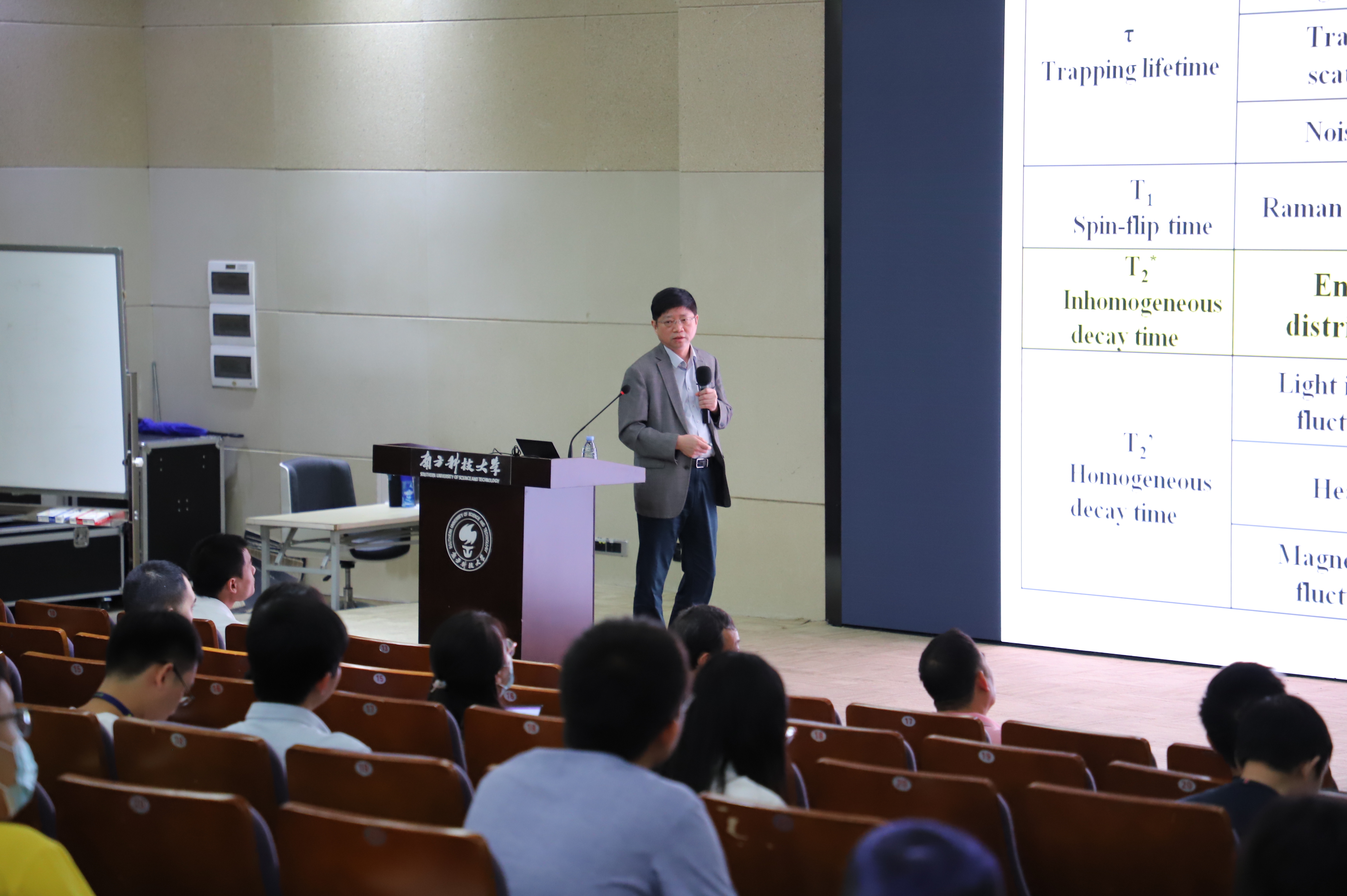
Prof. Zhan is delivering the lecture
The research work introduced by Prof.Mingsheng Zhan marked the realization of coherent control of the degree of freedom in the nuclear distance between atoms and opened the door to the research on the full coherent manipulation on the atom-molecule system at all degrees of freedom, which enhances the possibility of coherent control in elementary chemical reaction process and the possibility of coherent synthesis and quantum control of bound quantum few-body.
Interaction
After the lecture, the audience asked questions regarding the scalability of neutral atom quantum computing, the control time and accuracy of quantum logic gates, the applicability of the coupling between atomic spin and relative motion wave function in other molecular systems, etc., Prof. Mingsheng Zhan gave detailed explanations to each question.
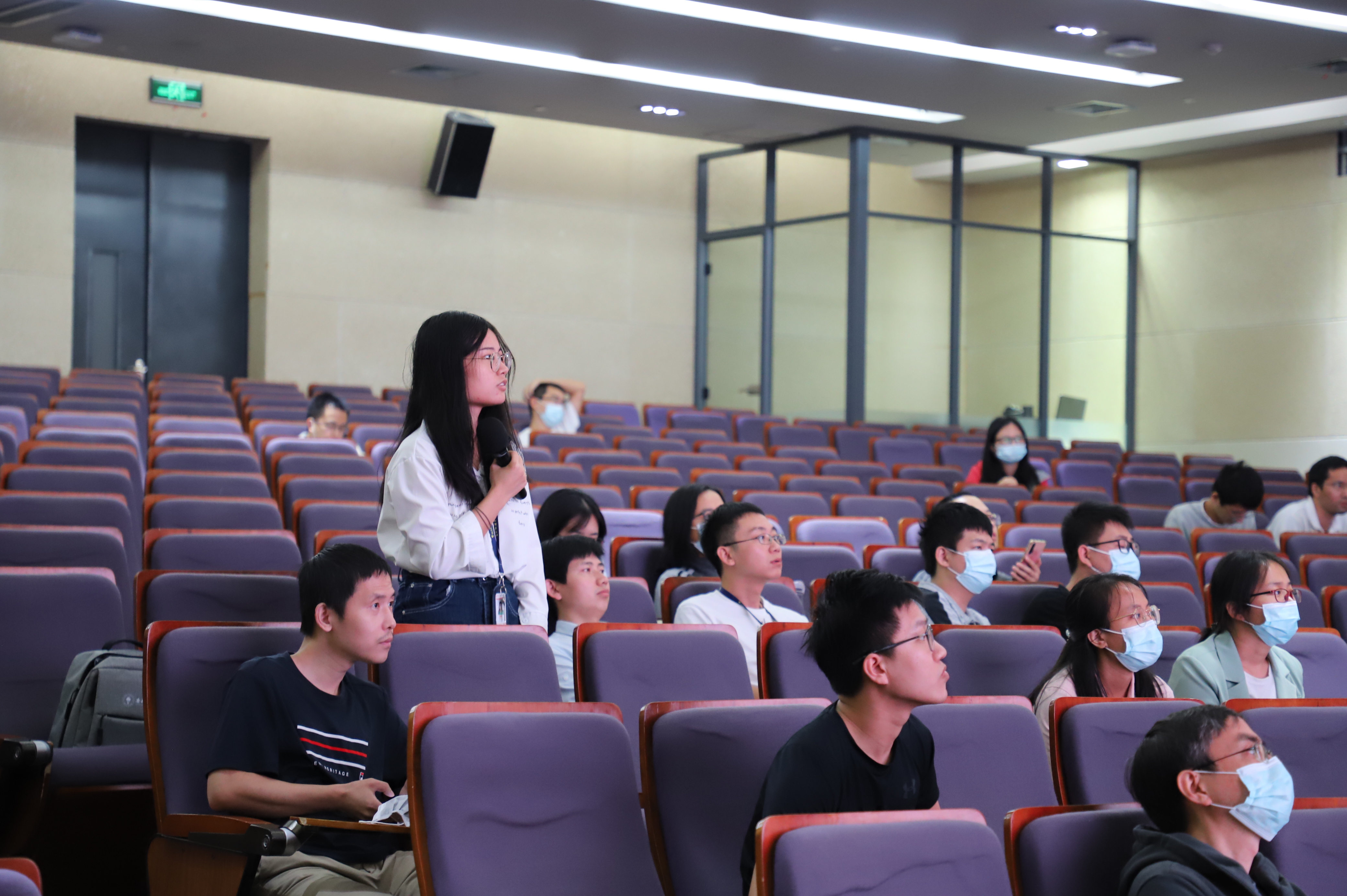
To conclude the lecture, academician Dapeng YU handed an honorary certificate to Prof. Mingsheng ZHAN and had a photo with him.
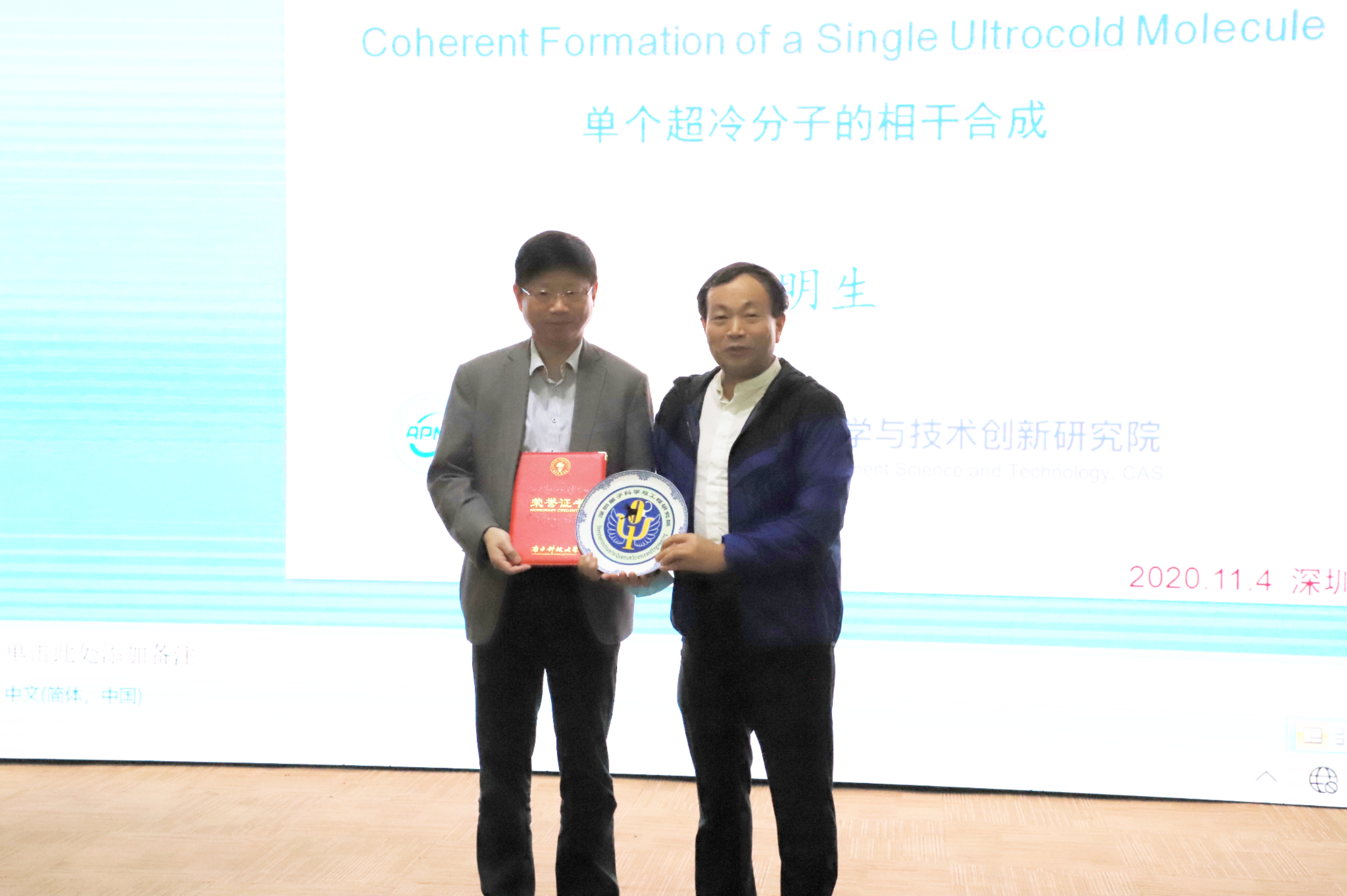
Prof. Mingsheng ZHAN and Prof. Dapeng YU




